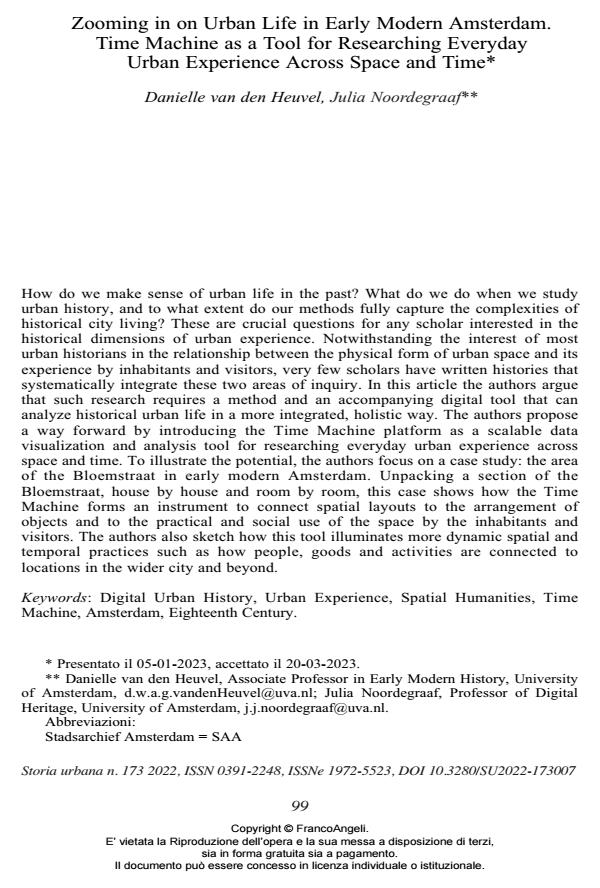Zooming in on Urban Life in Early Modern Amsterdam. Time Machine as a Tool for Researching Everyday Urban Experience Across Space and Time
Journal title STORIA URBANA
Author/s Danielle van den Heuvel, Julia Noordegraaf
Publishing Year 2024 Issue 2022/173
Language English Pages 22 P. 99-120 File size 464 KB
DOI 10.3280/SU2022-173007
DOI is like a bar code for intellectual property: to have more infomation
click here
Below, you can see the article first page
If you want to buy this article in PDF format, you can do it, following the instructions to buy download credits

FrancoAngeli is member of Publishers International Linking Association, Inc (PILA), a not-for-profit association which run the CrossRef service enabling links to and from online scholarly content.
How do we make sense of urban life in the past? What do we do when we study urban history, and to what extent do our methods fully capture the complexities of historical city living? These are crucial questions for any scholar interested in the historical dimensions of urban experience. Notwithstanding the interest of most urban historians in the relationship between the physical form of urban space and its experience by inhabitants and visitors, very few scholars have written histories that systematically integrate these two areas of inquiry. In this article the authors argue that such research requires a method and an accompanying digital tool that can analyze historical urban life in a more integrated, holistic way. The authors propose a way forward by introducing the Time Machine platform as a scalable data visualization and analysis tool for researching everyday urban experience across space and time. To illustrate the potential, the authors focus on a case study: the area of the Bloemstraat in early modern Amsterdam. Unpacking a section of the Bloemstraat, house by house and room by room, this case shows how the Time Machine forms an instrument to connect spatial layouts to the arrangement of objects and to the practical and social use of the space by the inhabitants and visitors. The authors also sketch how this tool illuminates more dynamic spatial and temporal practices such as how people, goods and activities are connected to locations in the wider city and beyond.
Keywords: Digital Urban History, Urban Experience, Spatial Humanities, Time Machine, Amsterdam, Eighteenth Century.
Danielle van den Heuvel, Julia Noordegraaf, Zooming in on Urban Life in Early Modern Amsterdam. Time Machine as a Tool for Researching Everyday Urban Experience Across Space and Time in "STORIA URBANA " 173/2022, pp 99-120, DOI: 10.3280/SU2022-173007